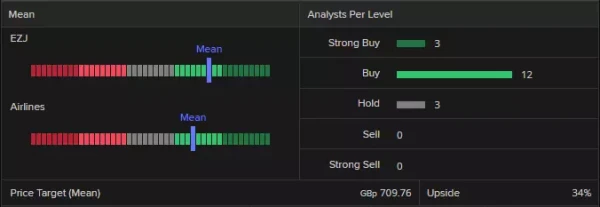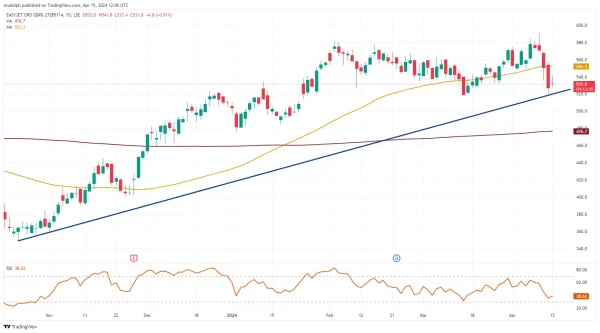easyJet Q2 preview – revenue improvement helps trim losses
EasyJet Q2 preview – revenue improvement helps trim losses
Ahead of easyJet PLC's fiscal second quarter trading update on April 18th and interim results on May 16th, analysts are turning more positive on the European low-cost carrier's outlook. Improved revenue trends and continued strong summer travel demand are expected to support profitability over the coming quarters.
A key driver is the upgraded forecast for Q2 revenue per seat, which is now expected to increase by around 7% year-over-year, up from the previous estimate of a 6% rise. This revenue momentum underscores the airline's ability to capture higher fares and ancillary revenues as travel demand remains robust.
The strong Q2 revenue outlook, along with operational improvements, is projected to trim easyJet's first half pre-tax loss. While still a loss for the seasonally weaker first half, the reduced loss highlights the airline’s recovery from the pandemic.
Analyst ratings for easyJet
LSEG Refinitiv data shows a consensus analyst rating of ‘buy’ for easyJet with 3 strong buy, 12 buy and 3 hold – and a mean of estimates suggesting a long-term price target of 709.76 pence for the share, roughly 34% higher than the current price (as of 15 April 2024).

Technical outlook on the easyJet share price
Having only last week hit a two-year high at 591p, the easyJet share price dropped by around 10% since then on fears of how escalating tensions in the Middle East might affect future air travel demand.
The easyJet share price found support around its mid-March 518.6p low on Friday’s though, when it dipped to a near three-month low at 517.8p.
easyJet Daily Candlestick Chart


Failure in the 518.6p to 517.8p support zone would have short-term bearish implications and push the early to mid-January lows as well as the 200-day simple moving average (SMA) at 484.9p to 475.4p to the fore.
While the early January low at 475.4p underpins, the medium-term uptrend would remain intact, though.
Only an unexpected bearish reversal and fall through the 475.4p early January low would have negative longer-term consequences for the easyJet share price and would probably take it back down to the September and October highs at 464.4p to 450.7p. Slightly further down lies the mid-November high at 445.6p.
Immediate resistance can be spotted along the 55-day simple moving average (SMA) at 552.3p and major resistance between the February and current April peaks at 582.2p to 591.0p. The latter was made right between the mid-October 2021 low and the mid-April 2022 high at 589.4p to 604.2p which still represents an upside target zone for the easyJet share price.